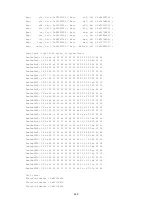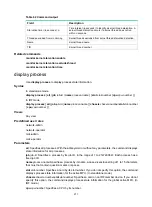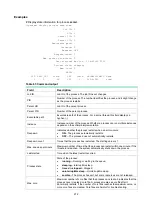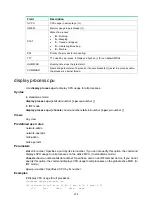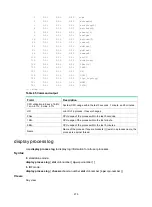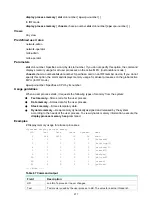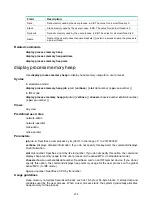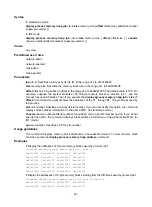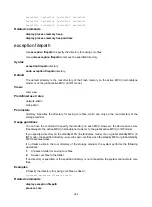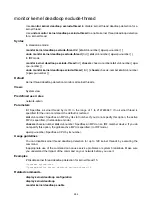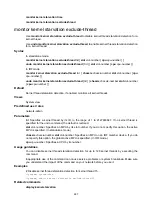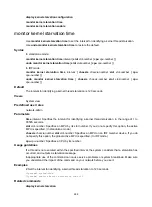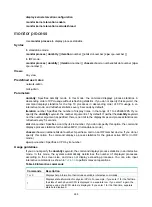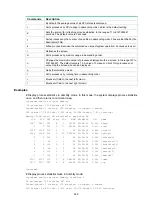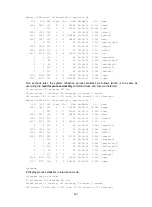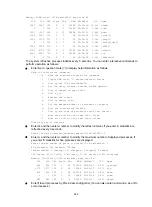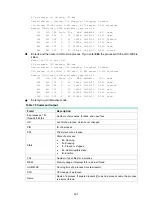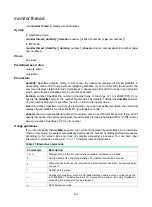
282
0xb7e30180 0xb7e30190 0xb7e301a0 0xb7e301b0
0xb7e301c0 0xb7e301d0 0xb7e301e0 0xb7e301f0
0xb7e30200 0xb7e30210 0xb7e30220 0xb7e30230
Related commands
display process memory heap
display process memory heap address
exception filepath
Use
exception filepath
to specify the directory for saving core files.
Use
undo exception filepath
to remove the specified directory.
Syntax
exception filepath
directory
undo exception filepath
directory
Default
The default directory is the root directory of the Flash memory on the active MPU (in standalone
mode) or on the global active MPU (in IRF mode).
Views
User view
Predefined user roles
network-admin
mdc-admin
Parameters
directory
: Specifies the directory for saving core files, which can only be the root directory of the
storage medium.
Usage guidelines
You can use the command to specify the directory on each MPU. However, the device saves core
files always to the active MPU (in standalone mode) or to the global active MPU (in IRF mode).
If you specify a directory on the standby MPU (in standalone mode) or on a global standby MPU (in
IRF mode), the specified directory is used to save core files when the standby MPU or global standby
MPU becomes active.
If no folder exists in the root directory of the storage medium, the system performs the following
operations:
1.
Creates a folder for saving core files.
2.
Saves core files to the folder.
If no directory is specified or the specified directory is not accessible, the system cannot store core
files.
Examples
# Specify the directory for saving core files as flash:/.
<Sysname> exception filepath flash:/
Related commands
display exception filepath
process core


